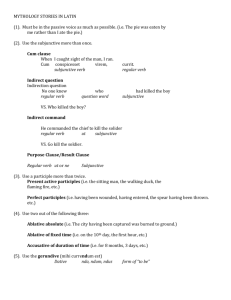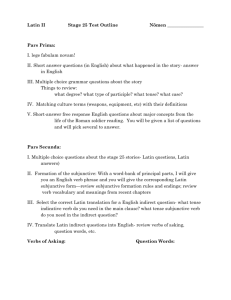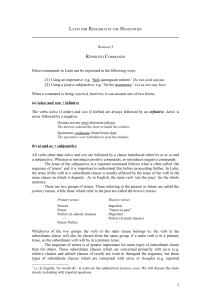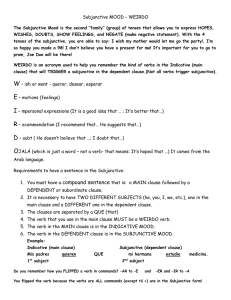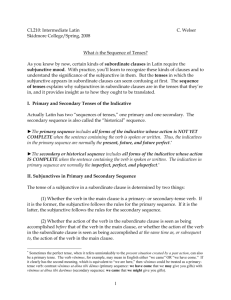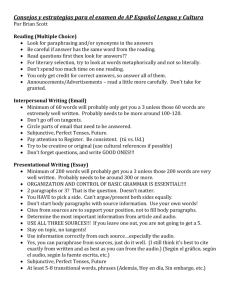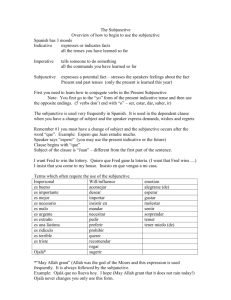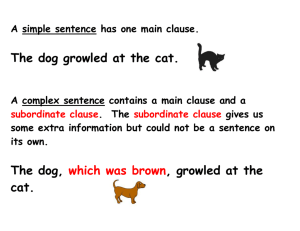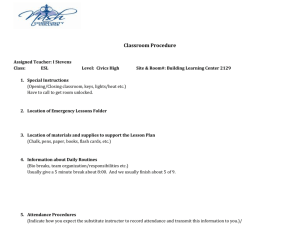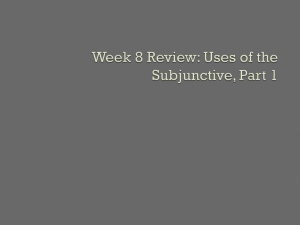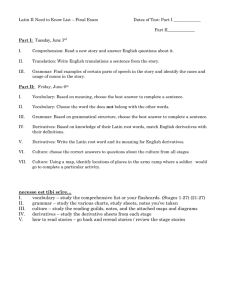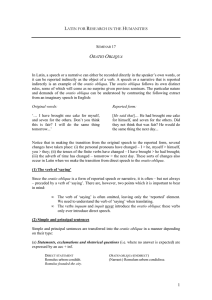Chapter 30
advertisement
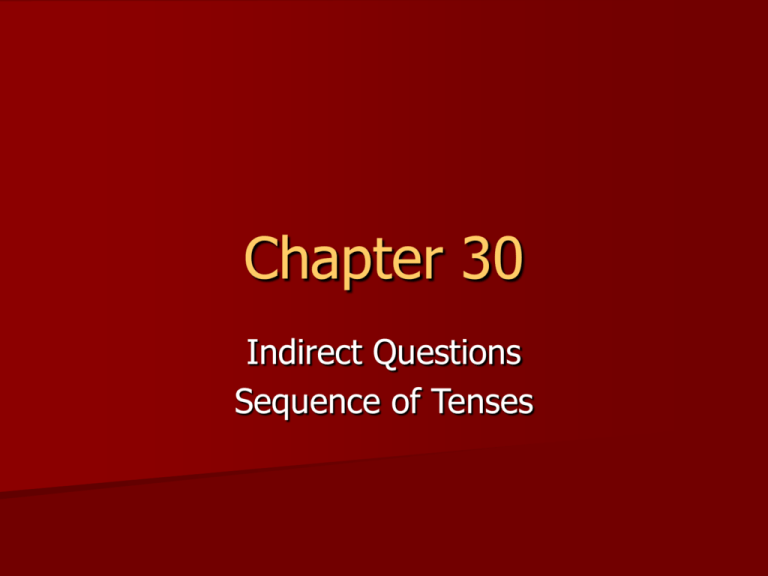
Chapter 30 Indirect Questions Sequence of Tenses Indirect Questions Another subordinate use of the subjunctive. Reports what someone asks without directly quoting that person. Similar to the concept of the Indirect Statement with a Subjunctive verb instead of an accusative-infinitive construction. Indirect Questions Identified by: – a main verb of asking, telling, thinking (similar to indirect statement) – an interrogative word – a subjunctive verb in the subordinate clause Interrogatives: – quis, quid / quī, quae, quod – quam, quandō, cūr, ubi, unde, uter, utrum, an, -ne English Examples Dad asked us where we were going today. The class wondered what questions would be on the next test. The children debated whether Santa Claus brought the presents or not. Latin Examples ille auctor narrābat nōbīs quantā cum cūrā Rōmulus moenia urbis condidisset. ōrātor repente rogāvit cūr cēterī cīvēs ingenium huius virī nōn cognōvissent. nesciō utrum vīvī an mortuī plūs honōris crās acceptūrī sint. Sequence of Tenses This describes the way in which a speaker/writer proceeds from the main clause into a subordinate clause. So, in English one can’t say, “I was there when he is here.” To be correct, one must say, “I was there when he was here.” Because the main clause contains a past tense verb the subordinate clause agrees in its tense. Latin Sequence Structure Because subordination is often indicated by the subjunctive mood in Latin, the sequence of tenses begins with an indicative verb (usually) and then contains a subjunctive in the subordinate clause. There are two groupings in Latin sequence of tenses: Primary and Secondary (Historical) Primary Sequence This sequence is made up of incomplete action tenses – Present – Future The subordinates for primary sequence are either – Present subjunctive – action at the same time – Perfect subjunctive – action previous to Secondary Sequence This sequence is made up of complete action tenses – All past tenses The subordinates for secondary sequence are – Imperfect subjunct. – action at the same time – Pluperfect subjunct. – action previous to The Main Point The main thing to remember is that the subjunctive in the subordinate clause will translate to English differently depending upon its main clause verb.
